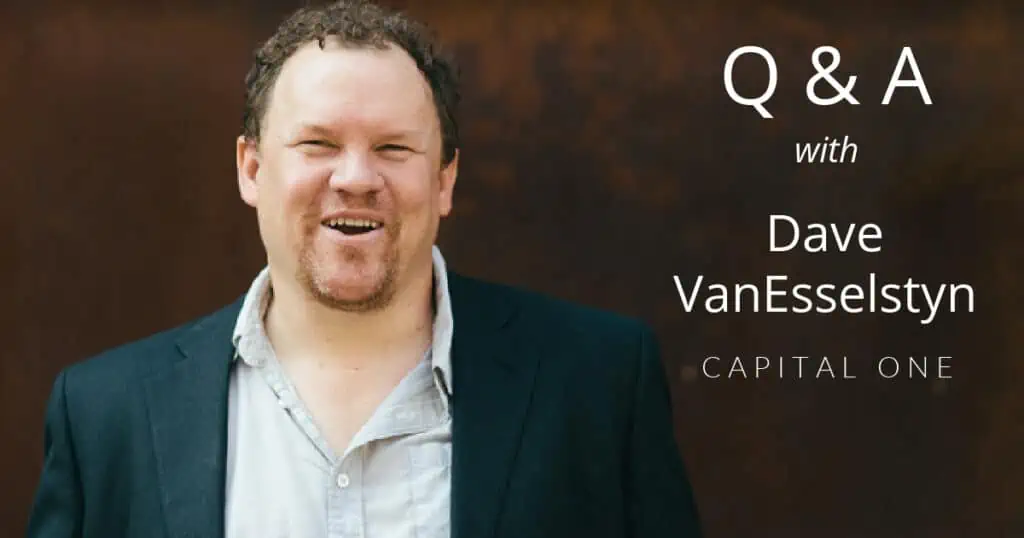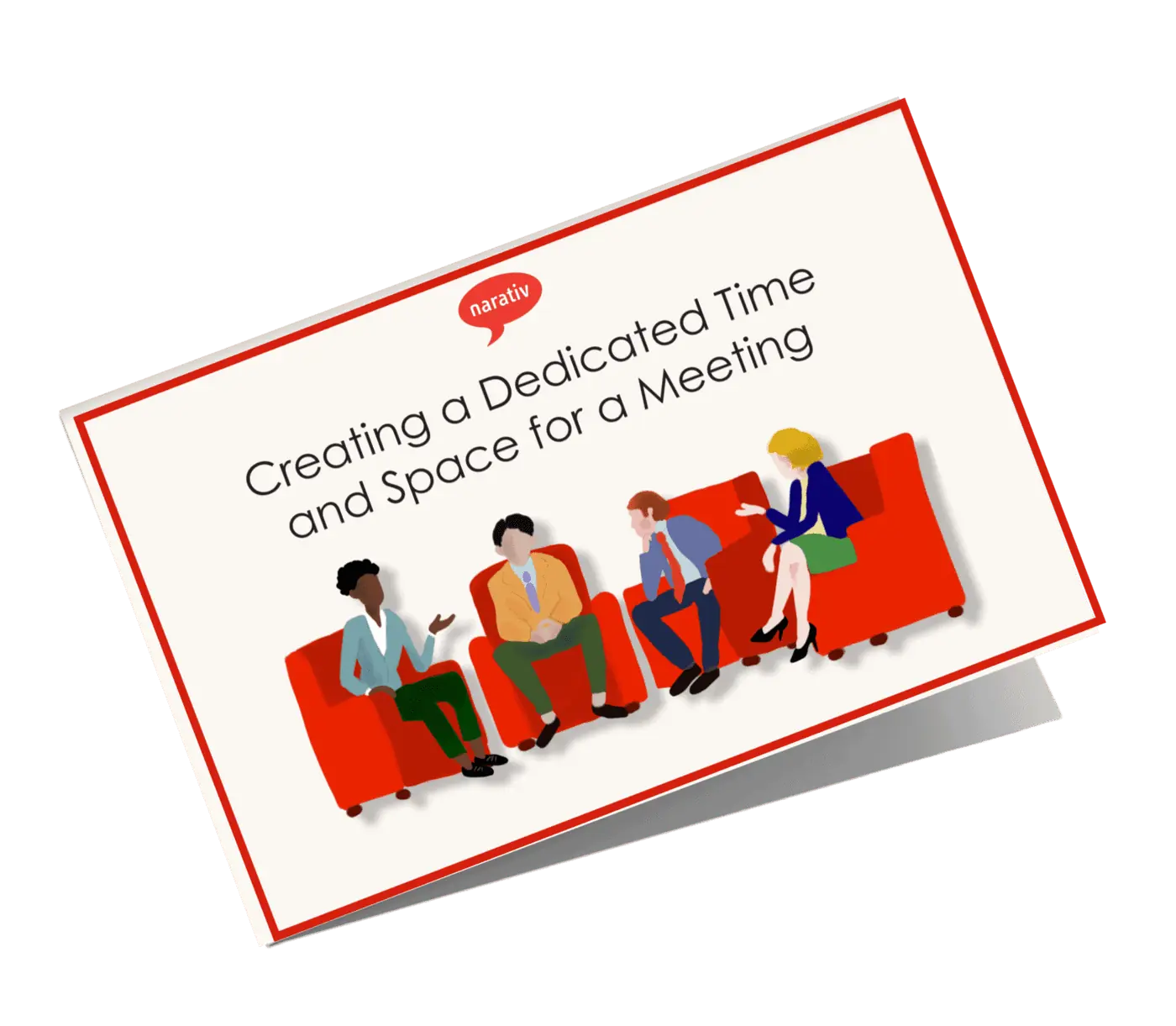Executive Summary
The Narativ method consists of coaching individuals in listening and storytelling to improve communication. How does that compute with a sales strategy? Narativ’s CEO, Jerome Deroy, sat down with Elizabeth Frederick, Operations Officer & Senior Sales Advisor and host of the Let’s Talk Sales Podcast from Criteria for Success, to highlight how Narativ’s own methodology of listening and storytelling, delivered in a different environment, has a close tie-in with sales.
Criteria for Success dedicated the month of October to the theme of assessing the state of one’s business in order to troubleshoot what went wrong, build on what went well, and develop a stronger sales strategy for 2020.
How storytelling can assist in this effort was the focal point of Jerome and Elizabeth’s conversation. In a nutshell, Jerome suggests that the practice of listening allows you to inventory the business’ successes and failures over the year and to identify key moments of change. To do so begins with listening. Then, when you craft that inquiry into a narrative, told in an impartial way using only what happened rather than commentary and interpretation (the heart of Narativ’s methodology), you engage your listeners in highly accessible and relatable information. It becomes immediately evident which decisions need to be made. And you paint a vision for the future. Finally, to integrate data within the story only makes this process more beneficial.
Below is an edited excerpt from the highlights of their conversation.
Elizabeth: Given that assessing one’s business is a key task at the end of a year leading up to the new year, how can storytelling be a part of assessing the state of an organization?

Jerome: I think of storytelling as playing a role in the process. When you assess the state of your business, you’re taking an inventory of what you have, what you’ve done, what your assets are, and who your clients are. You’re taking a snapshot of the landscape that is your business. When I talk about storytelling, assessing the state of your business should lead to some kind of a narrative. You’re making connections—this engagement that you had with this one client, maybe there was an innovation over here; all of that is part of a story. But what you’re really doing is you’re listening to what you’ve done, you’re listening to your clients, you’re listening to the market, you’re listening to your colleagues. For me, the whole [notion of] assessing your business… is really listening and it’s having conversations with people and asking them, if you’re going back to clients [for example], what was the value that we brought? How would you describe the work that we did with you? So I think the first step is listening.
Elizabeth: Once you start to see what people are interested in, that drives some decision-making. Let’s drill in on what were the things that seem to be compelling to our market this year. How do we implement more of that next year? How do we level up in everything else so that we’re hitting those same targets?
Jerome: One of the most important principles of storytelling is to be specific. If you’re not specific, then people don’t really follow you. So if your vision is an aspiration, essentially, and says, we’re going to change the world with this particular service, that’s great, but it’s not specific enough. Once you’ve got that vision, then you have to make it really specific and you have to explain to your colleagues and customers why you’re going in a certain direction that’s going to help you to differentiate yourselves from all the other people.
You can use storytelling principles all along the way. The question “why” is so important because you’re really guiding people somewhere: if people aren’t really understanding why you’re going in that direction, then they’re not likely to be on board with the idea.
Elizabeth: If you picture an executive leading a town hall where they bring their entire team of employees together and they’ve got some people in person and some people joining remotely, just picture the difference between “here are our stats from last year,” and “Let’s talk about the story of 2019: think back to where we were at the beginning of this year. Let’s talk about what we learned from the past year and tell it in the context of a story.” That’s going to be a significantly more impactful conversation.
Jerome: Yes, absolutely. What you’ll always notice in an assessment is similar to what you’ll always notice in the structure of a story: that there’s always a moment of change. Because the brain knows when you’re being told a story, your brain starts to expect a change: it’s what makes us want to know what the end of the story is, what’s going to happen next. That moment of change [is] what we call a turning point. So it’s identifying those turning points over the last year and how you will build on those turning points, either by acknowledging changes such as people leaving or acquiring a new business or new people coming in, acknowledging… what it has done for your business, whether negative or positive, doesn’t matter.
Elizabeth: I think when it comes to crafting that story, and you go on that listening tour, you’re reaching out to these key constituencies and hearing what the story seems to be and evaluating or absorbing that story. When you identify those key points of the story, whether it’s a turning point or whether it’s a result that was achieved that tells you, for each turning point you should measure the following: What was the impact of that turning point? What were the numbers before and what were the numbers after? How many of these kinds of customers do we have? What are we seeing in terms of growth?
When you put those stats in the context of a story, it helps understand and explain the statistics. Yet, you can’t just tell a story that’s just here’s how I felt at the beginning of the year and I kind of felt like things went well and then I feel like things got complicated. That’s not a powerful story and it’s hard to make good decisions based on that. I think that’s a really great thing to identify is that stories are not just your feelings, they’re based on details and facts.
Jerome: It’s important to come with that sort of attitude because it can be quite uncomfortable [to talk about negative experiences]. You can see changes that have happened and sort of think, well gosh, when I tell people about that, it may not be so comfortable, but if you have your eye on the end of that story and where you want to take people, then it’s important to actually acknowledge those moments and then to bring them to a more aspirational place. We didn’t hit our goals in the way that we thought we would, but we actually did [hit them] and based on that, now we’re going to go to this other place based on these two or three elements that we’ve identified as the conclusions of this assessment. A story gives you a way to succinctly give the conclusions of that assessment. So to me, you do the assessment, you look at everything in great detail, and then you start to craft the story. You use it as a way of crafting a story that’s not too long, that’s good for that audience, and that is on point in terms of the direction you want to take them in, right? So you’re not glossing over anything, you’re not embellishing anything, but rather you’re taking them through some very specific milestones, some very specific markers that the business has gone through. What’s really important is that once you’ve told that story, you have to build in some time to listen.
Elizabeth: When we’re telling a story of our business, it’s looking for those indications, those turning points. But like you said, that step of listening and of getting the audience involved—[it allows us] to do some level of analysis and interpretation of those turning points and figure out the most important ones, the ones that seemed to make the biggest changes.
Jerome: I think that listening is this through-line that you always have to come back to. You really want to make sure that you’ve got some kind of a system to be able to capture those ideas and those voices. The best way to do that in my experience is when you tell your own story and you share where you think the business is going, it’s going to generate other stories.
I think sometimes people confuse story with just sort of qualitative recommendations, or maybe a summary, but really there’s a lot of room in this story to actually bring in data very strategically, so you can make that part of your story. I think the more specific you are, especially in assessments like this, the less it’s possible for people to veer into their own interpretations of it or even their own opinions. If your story is based on reality and based on something that happened, then it’s much more difficult to argue with that, with your own feelings about it. So maybe you feel like you don’t really like this direction. That’s your feeling. Or maybe you don’t agree with it, but tell me what specifically you don’t agree with and why and root it in something that’s real and tangible, instead of something that’s more about a feeling that you’re having.



